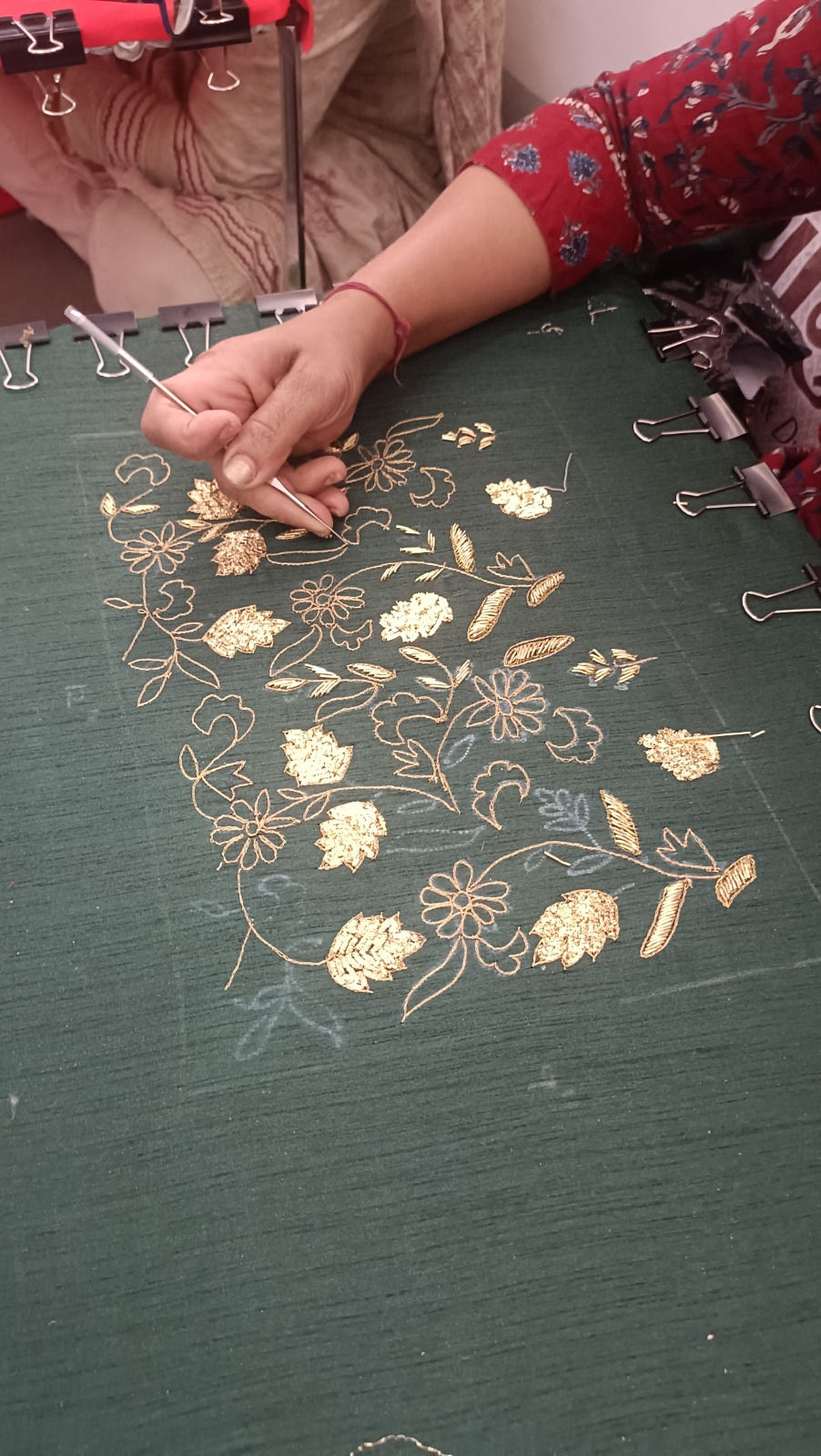The Intricate Artistry of Aari Work: Unveiling the Mysteries Behind Traditional Embroidery Techniques
- prabhat gautam
- May 20
- 3 min read
Updated: Jul 20
Aari work, a breathtaking style of traditional Indian embroidery, has enchanted people for generations. Rooted in the royal courts of India, this exquisite craft seamlessly blends rich cultural heritage with detailed craftsmanship. In this post, we will explore the various facets of Aari work, examining its history, techniques, and the exceptional skill required to create mesmerizing pieces.
The Historical Significance of Aari Work
Aari work traces its origins to the Mughal era in India, symbolizing elegance and sophistication in royal fashion. This technique adorned garments worn by emperors, queens, and aristocrats. For instance, elaborate Aari designs often featured intricate floral motifs and graceful birds, all executed with remarkable precision.
This art form not only enriched India's cultural narrative but also provided livelihoods for numerous artisans. Today, Aari work continues to thrive within contemporary fashion, solidifying its enduring appeal across generations.
Understanding Aari Work Techniques
At the core of Aari work is a meticulous embroidery method. Unlike traditional techniques that rely solely on needle and thread, Aari work employs a hooked needle known as the "Aari." This special tool allows artisans to create raised, intricate designs, often without needing a backing fabric.
The Tools of the Trade
The Aari needle is key to this delicate craft, distinguished by its pointed end and hook, which helps pull the thread through the fabric layers. Artisans typically use various threads, including silk, cotton, and zari (gold or silver thread), depending on the texture and shine desired in the design.
Additionally, artisans work with different fabrics like cotton, silk, and chiffon, each influencing the character of the embroidery. For example, silk creates a rich, lustrous background for Aari work, while cotton offers a more subtle finish.

Design Inspiration and Motifs
Aari work designs reflect the diverse regions of India and often draw inspiration from nature. For instance, artisans may create elaborate floral patterns or geometric shapes that highlight their community's cultural heritage. Some regions, like Gujarat, are known for their vibrant peacock motifs, while others may feature lotus flowers symbolic of purity.
Before beginning the embroidery, artisans usually sketch their designs on paper or fabric. This preparation phase is essential for visualizing the final product and ensuring visual harmony and balance in the completed piece.
The Process of Creating Aari Work
Creating Aari work is an intensive journey demanding patience and precision. Here’s a concise overview of the steps involved:
Preparing the Fabric: The fabric is washed and ironed to ensure it's clean and smooth for embroidery.
Sketching the Design: The chosen design is drawn on the fabric using a pencil or washable fabric marker.
Setting Up: The fabric is stretched in a wooden frame to prevent distortion while embroidering.
Embroidery: The artisan stitches the thread through the fabric using the Aari needle, meticulously working through each design element. Depending on the design's complexity, this task can take hours, days, or even weeks.
Finishing Touches: After completing the embroidery, the fabric is washed again to remove any leftover markings. Final adjustments and enhancements are made to ensure quality.

The Contemporary Relevance of Aari Work
Recently, Aari work has gained fresh attention in the fashion industry. Designers are merging these traditional techniques with modern styles, crafting unique pieces that appeal to today’s consumers. For example, Aari-embroidered kurta sets and chic home decor items have become increasingly popular, bridging the gap between heritage and contemporary trends.
As consumers show growing interest in sustainable and ethically sourced products, the demand for handcrafted Aari work has surged. According to reports, the market for sustainable fashion could reach $8.25 billion by 2023, further spotlighting Aari artisans and their craft.
Challenges Faced by Aari Artisans
Despite its beauty, Aari work faces significant challenges. Machine-made imitations can replicate similar designs at lower costs, putting traditional artisans at risk. Furthermore, there is a worrying decline in the number of skilled practitioners, threatening the art's future.
Efforts are underway to promote and preserve Aari work through workshops, exhibitions, and collaborations with modern designers. Supporting local artisans by purchasing authentic handmade products can help sustain this intricate craft for future generations.
Celebrating the Craft of Aari Work
Aari work transcends simple embroidery; it represents culture, history, and artistic expression. The dedication behind each piece showcases the commitment of artisans and the richness of Indian heritage. As Aari work continues to evolve, it is crucial for us to appreciate and support this timeless craft.
Understanding the artistry and the artisans who create Aari work allows us to contribute to its preservation and success in today’s ever-changing landscape. So, the next time you admire a beautifully embroidered piece, remember to value the artistry and history woven into every single stitch.



Comments